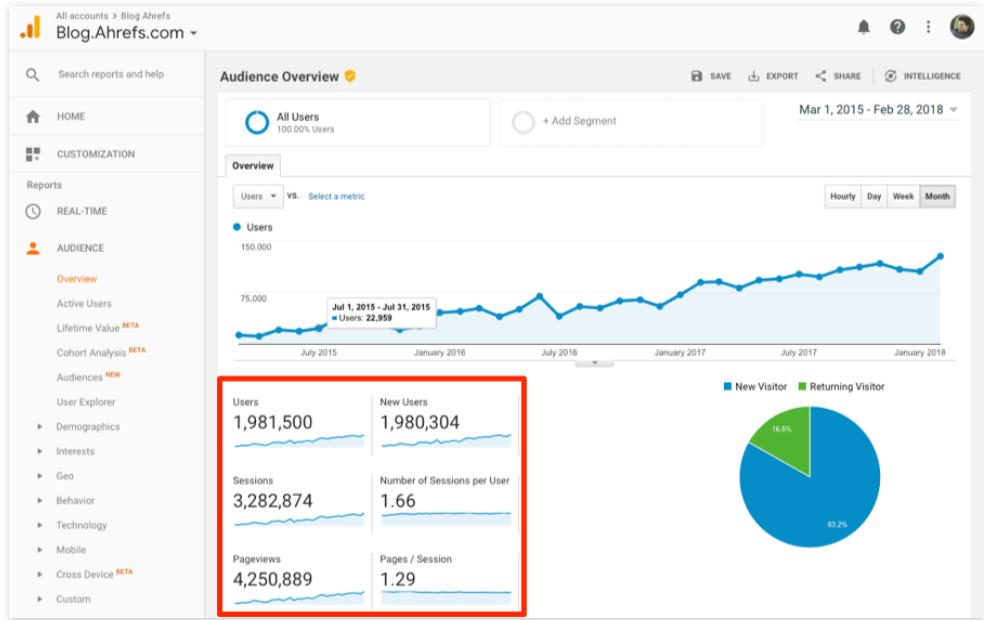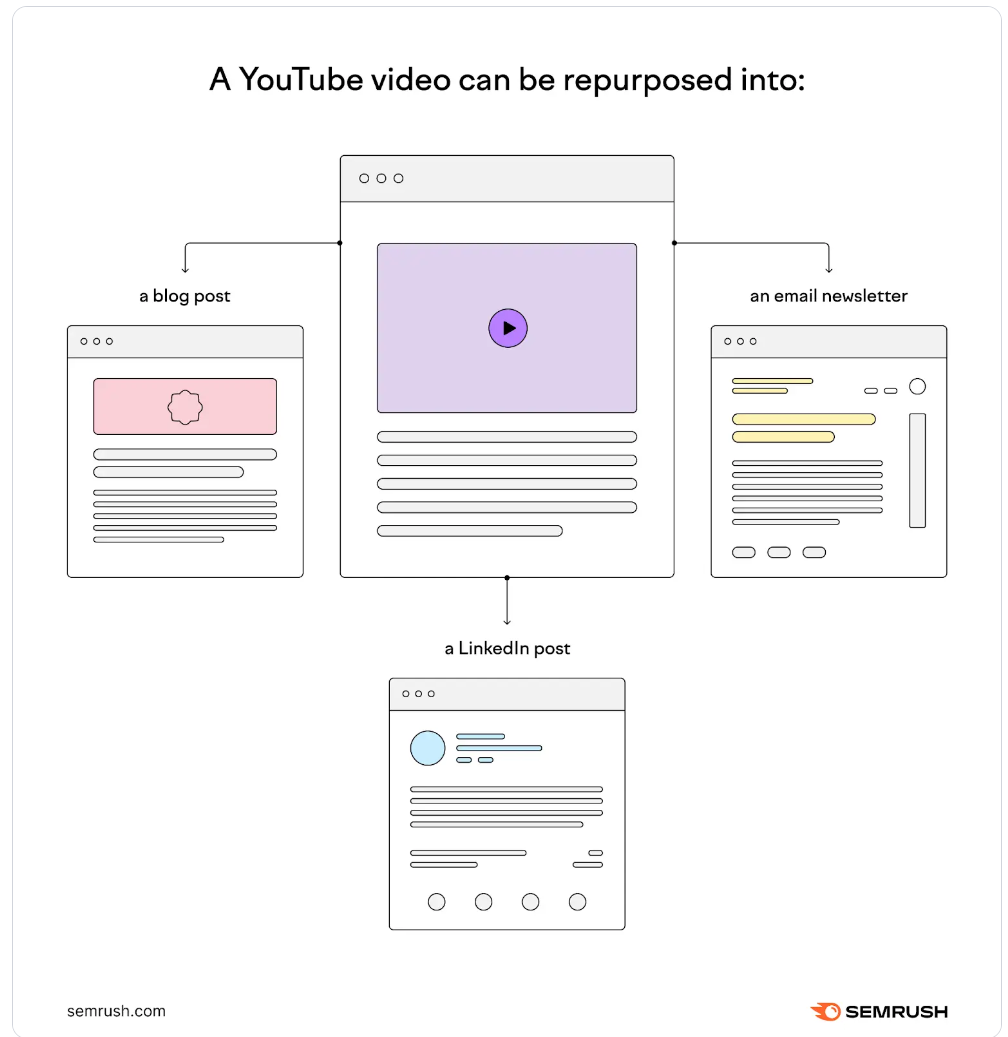Understanding the effectiveness of your content marketing efforts is crucial, and that’s where content marketing KPIs (Key Performance Indicators) come into play.
These metrics provide a glimpse into the performance of your digital content and offer insights into areas for improvement, engagement levels, and overall impact on your business goals.
Whether you’re a seasoned marketer or new to the field, understanding these KPIs will empower you to craft more impactful content strategies tailored to the dynamics of your audience and the goals of your brand.
This article unveils 10 essential content marketing KPIs and provides a comprehensive guide on measuring, understanding, and optimizing your content marketing initiatives for maximum growth.
- 1. Website Traffic: The Gateway for Content Marketing KPIs
- 2. Lead Generation: Turning Visitors into Potential Customers
- 3. Engagement Metrics: Understanding Audience Interaction
- 4. SEO Rankings: Visibility in Search Engines
- 5. Social Media Performance: Amplifying Content Reach
- 6. Conversion Rate: The Ultimate Measure of Content Effectiveness
- 7. Email Marketing Performance: Engaging Your Subscriber Base
- 8. Content ROI: Measuring the Financial Impact
- 9. Audience Growth and Retention: Building a Loyal Community
- 10. Content Shareability: Virality and Social Amplification
- Innovative Content Metrics: Next-Gen KPIs to Watch
- Leveraging Content Marketing KPIs for Unparalleled Growth
- FAQs
- What are the most essential content marketing KPIs for a new website?
- How can small businesses effectively track and analyze content marketing KPIs?
- What tools are recommended for monitoring content marketing KPIs?
- How often should content marketing KPIs be reviewed for strategy adjustments?
- Can content marketing KPIs differ by industry, and how should they be tailored?
1. Website Traffic: The Gateway for Content Marketing KPIs

Website traffic is one of the critical content marketing KPIs that reflects the volume of visitors and is a primary indicator of your content’s reach and appeal.
Tracking website traffic enables you to gauge the effectiveness of your content strategy and identify opportunities for optimization.
Measuring Website Traffic: Use tools like Google Analytics to monitor the number of visitors, sessions, and page views. These metrics provide a snapshot of your website’s popularity and the effectiveness of your content in attracting a broader audience.
Interpreting Website Traffic Data: Beyond mere numbers, analyze the sources of your traffic (organic search, social media, direct visits) to understand which channels are most effective in driving visitors. This insight allows for targeted content optimization, enhancing visibility and engagement across preferred channels.
2. Lead Generation: Turning Visitors into Potential Customers
Lead generation is pivotal in transforming website visitors into leads, marking the beginning of a potential customer’s journey with your brand.
Strategies for Tracking and Increasing Leads: Employ lead capture forms and calls-to-action (CTAs) within your content to facilitate this conversion. Tools like Google Analytics and specialized CRM software can help track these conversions, offering insights into which pieces of content are most effective at generating leads.
The Role of Content in Nurturing Leads: Quality content is crucial in nurturing leads through the sales funnel. Educational blog posts, informative ebooks, and engaging videos help maintain interest and guide potential customers toward making a purchase.
3. Engagement Metrics: Understanding Audience Interaction
Engagement metrics show how your audience interacts with your content, offering insights beyond mere visibility.
These metrics, including time on page, pages per session, and bounce rate, help gauge the quality and relevance of your content to your audience.
To improve content engagement, create high-quality, informative, and engaging content that addresses your audience’s needs and interests.
You can incorporate interactive elements like quizzes, polls, and videos to encourage active participation.
Also, ensure your website offers a seamless user experience with fast loading times and a mobile-friendly design.
4. SEO Rankings: Visibility in Search Engines
SEO rankings are critical for ensuring your content is visible in search engine results pages (SERPs), driving organic traffic to your website.
High rankings for targeted keywords mean more visibility, more traffic, and, ultimately, more opportunities for conversion.
To improve SEO rankings, conduct thorough keyword research to identify terms your audience is searching for and incorporate them naturally into your content.
Additionally, use tools like Google’s Search Console and SEMrush to monitor your rankings, track your performance for specific keywords, and uncover areas for improvement.
5. Social Media Performance: Amplifying Content Reach
Social media platforms offer a powerful avenue to amplify your content’s reach and engage with your audience.
Metrics such as shares, likes, comments, and followers provide insights into how your content performs on these platforms. Social media success can be measured through engagement, reach, and follower growth.
To boost performance, maintain a consistent posting schedule to keep your audience engaged, share quality content, and actively engage with your audience by responding to comments and participating in conversations to build a loyal community.
6. Conversion Rate: The Ultimate Measure of Content Effectiveness
The conversion rate is a crucial metric that calculates the percentage of visitors who perform a desired action on your website, such as purchasing, subscribing to a newsletter, or filling out a contact form.
It is the most significant indicator of how effectively your content achieves your business goals.
Optimizing Content for Higher Conversion Rates
Clear CTAs: Ensure your calls-to-action are clear, compelling, and easy to find.
Value Proposition: Highlight the benefits of taking the desired action to motivate conversions.
A/B Testing: Regularly test different elements of your content and landing pages to identify what works best in driving conversions.
7. Email Marketing Performance: Engaging Your Subscriber Base
Email marketing remains essential for a robust content marketing strategy, offering direct engagement with your audience. Tracking campaign performance helps understand engagement and conversions.
Key Metrics to Track
Open Rate: This is the percentage of recipients who open your email, indicating the effectiveness of your subject lines.
Click-Through Rate (CTR): This is the percentage of readers who click on a link within your email, reflecting the relevance and appeal of your content.
Conversion Rate: This is the percentage of recipients who take a specific action after clicking through, measuring the ultimate success of the email in driving actions.
Some best practices to improve your email marketing strategy are to tailor emails to specific audience segments and offer value through informative content, exclusive offers, or engaging stories.
8. Content ROI: Measuring the Financial Impact
Content Return on Investment (ROI) measures the financial efficiency of your content marketing efforts.
It calculates the net profit or loss generated by your content compared to the costs of creating and distributing it.
Calculating Content ROI: Subtract the total costs of producing and promoting your content from the revenue attributed to these efforts, then divide by the total costs and multiply by 100 to get your ROI percentage.
You can improve your content ROI by conducting regular content audits to allocate resources efficiently, repurposing high-performing content across different formats to save costs, and tracking performance using analytics to adjust your strategy based on ROI.

9. Audience Growth and Retention: Building a Loyal Community
Audience growth and retention are crucial for the long-term success of your content marketing.
Building a loyal community not only supports steady growth but also enhances the overall effectiveness of your marketing strategy.
To monitor audience growth, track new followers or subscribers and engagement rate.
Additionally, deliver consistent quality content, foster community engagement, and actively seek audience feedback to retain your audience.
10. Content Shareability: Virality and Social Amplification
Shareability is a crucial metric that measures the potential of your content to be shared widely across social networks.
It enhances content reach beyond your immediate audience and boosts brand visibility and engagement.
Highly shareable content can reach a broader audience, increase brand awareness and recognition, and act as social proof.
To increase shareability, create emotionally resonant and informative content, encourage sharing, and track social shares, amplification rate, and peer influence.
Innovative Content Metrics: Next-Gen KPIs to Watch
As the digital landscape evolves, so do the metrics we use to measure content marketing success. Staying ahead of emerging trends and technologies can give you a competitive edge.
Emerging KPIs
Voice Search Optimization: With the rise of voice-activated devices, tracking how your content performs in voice search queries can offer new insights into visibility and engagement.
AI-Generated Content Engagement: As artificial intelligence plays a more significant role in content creation, measuring engagement with AI-generated content can help you understand its effectiveness compared to human-created content.
Leveraging Content Marketing KPIs for Unparalleled Growth
Tracking these 10 content marketing KPIs can significantly enhance your strategy, driving growth and ensuring your efforts are aligned with your business objectives.
From foundational metrics like website traffic and lead generation to advanced measures of engagement and ROI, each KPI offers unique insights that can inform and improve your content marketing initiatives.
If you want to refine your content strategy and harness the full potential of content marketing KPIs, Flying V Group is here to help.
Our team of experts specializes in crafting effective content strategies that drive results and growth.
Reach out to us today, and let’s embark on a journey to achieve unparalleled success together.
FAQs
What are the most essential content marketing KPIs for a new website?
For new websites, focus on website traffic, SEO rankings, and engagement metrics to gauge initial interest and discoverability.
How can small businesses effectively track and analyze content marketing KPIs?
Small businesses can leverage free, low-cost tools like Google Analytics for web traffic and engagement and social media analytics for platform-specific insights.
What tools are recommended for monitoring content marketing KPIs?
Tools like Google Analytics, SEMrush, and Hootsuite offer comprehensive analytics for various KPIs, including website performance, SEO rankings, and social media engagement.
How often should content marketing KPIs be reviewed for strategy adjustments?
Reviewing KPIs monthly allows for timely adjustments, while a more detailed quarterly review can inform broader strategic shifts.
Can content marketing KPIs differ by industry, and how should they be tailored?
Yes, KPIs can vary by industry based on specific goals and audiences. Tailor your KPIs by focusing on metrics directly impacting your business objectives and customer journey.






0 Comments